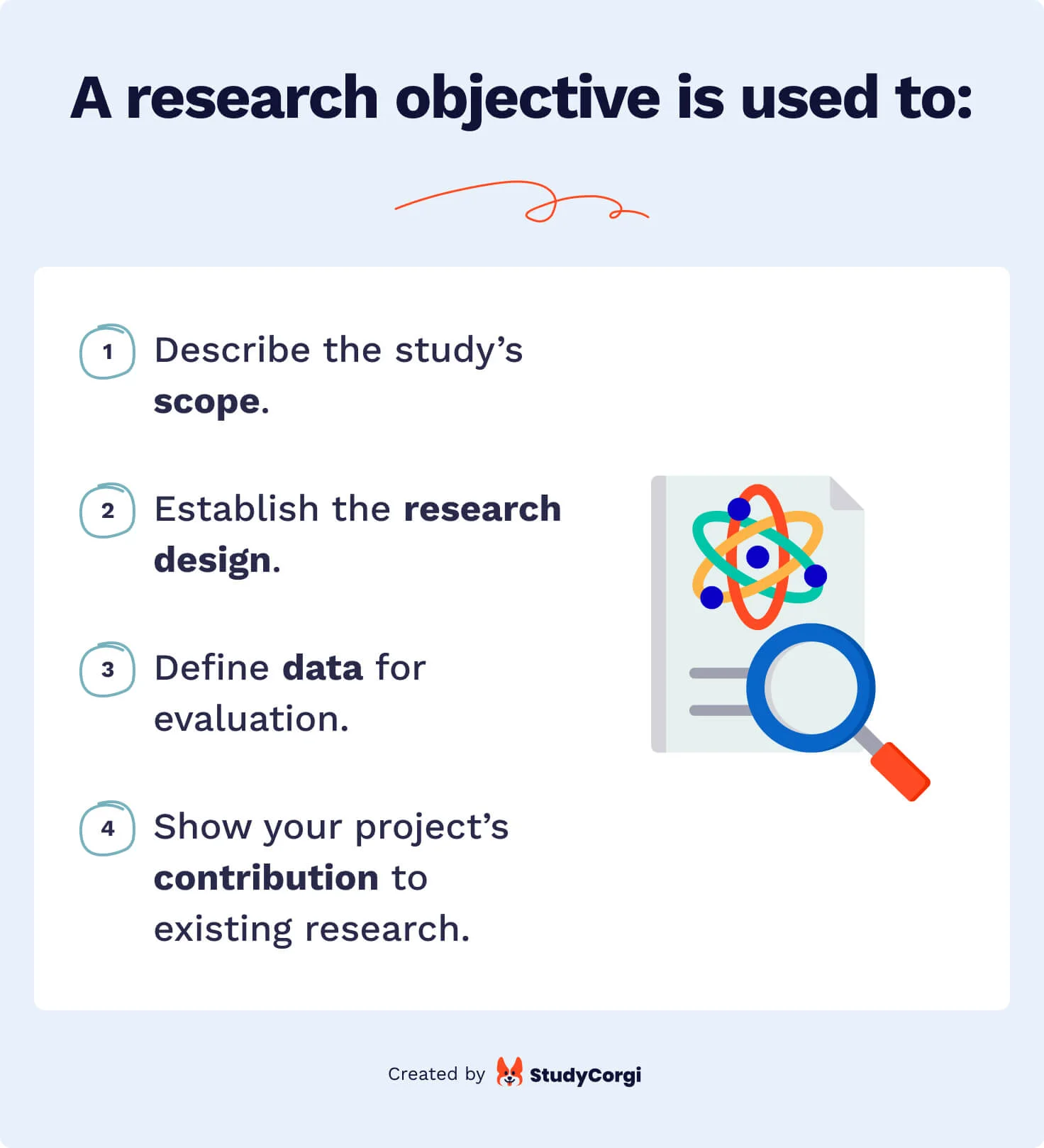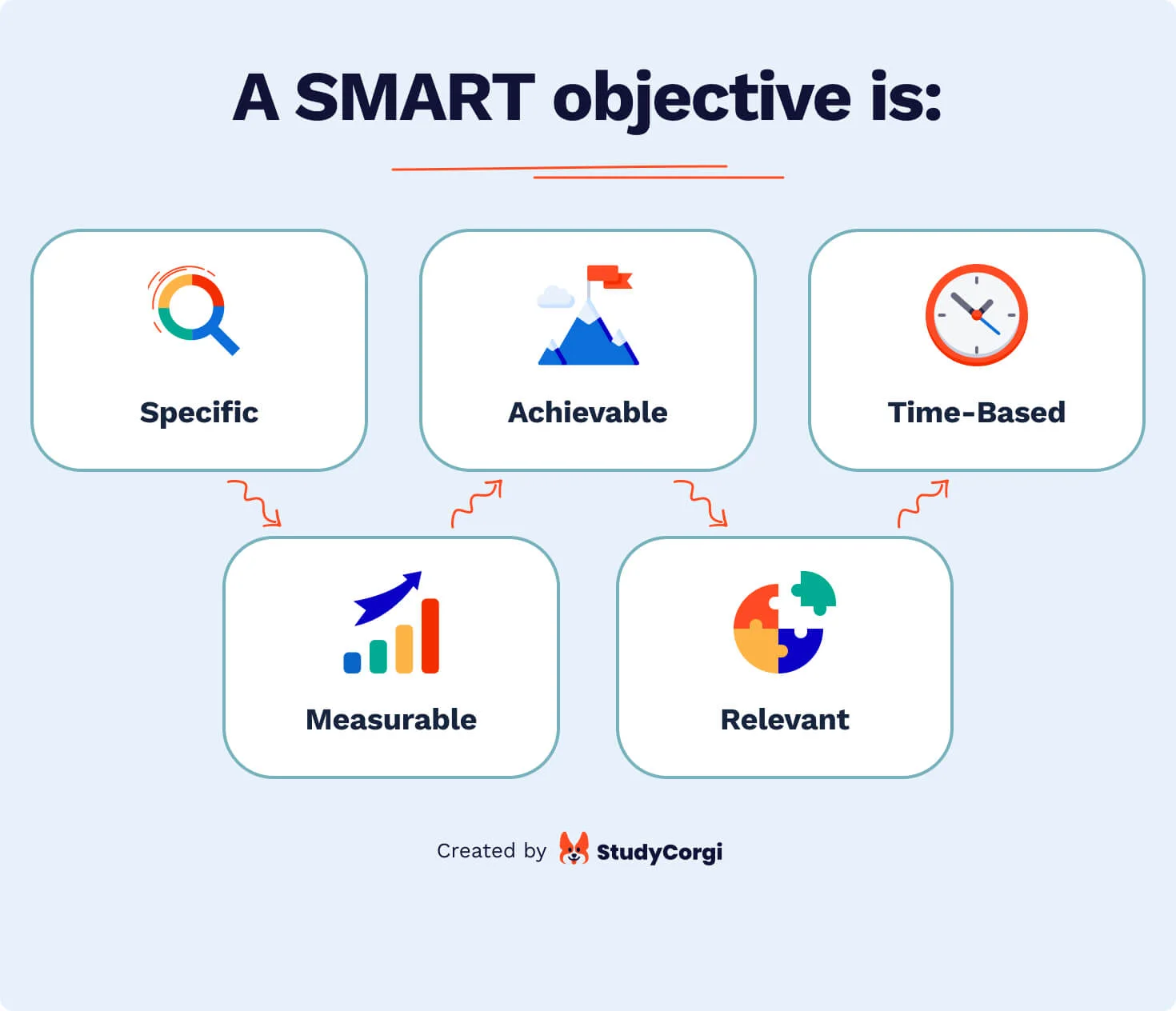✅ Research Objective Generator: the Benefits
A research objective is a crucial part of your paper that points to purpose of the study. Creating an effective research objective is a challenging task, even for experienced researchers.
Not sure how to do it?
No worries!
Our research objective generator can help you out.
Here are its main advantages:
🎯 Research Objective: the Basics
The research objective specifies how you are going to achieve your goal. It’s like a roadmap of your study that summarizes its aims, describes the results you expect to accomplish at the end, and helps you to keep track of your research.
The objective should always appear in the introduction of your paper or scientific article, right after the problem or thesis statement.
What Is a SMART Research Objective?
A SMART research objective is specific, measurable, achievable, relevant, and time-based. It means that the objective must include a precise, realistic task that is concise with the rest of the research, suppose some definite results, and be finished by a specific time.
Importance of a Research Objective
Find below the list of reasons why a research objective is important.

A good research objective is important because it:
- Describes the scope of your study. It allows you to keep an eye on your findings.
- Establishes the design of your research. It helps to choose the appropriate methods and procedures for data collection and measurement.
- Defines data and factors you need to evaluate. It narrows down your research to several measurable components you have to assess or compare.
- Specifies the contribution of your project to existing research. That’s a great way to show you know the studies conducted in your field and have something valuable to add to them.
✍️ How to Write a Research Objective
To write a strong and clear research objective, follow our three-step guide.
Step 1 – Define the Central Point of Your Research
It’s the first and the most crucial step. Begin with looking through the literature and studies in your area to determine the gaps in existing research. Then, consider how your project can fill these gaps and formulate the primary aim and objective.
Step 2 – Break Down Your Point into Several Objectives
So, you have the primary objective that states what you intend to achieve through your research. Now, it’s time to break it down. Think about what smaller steps you can take to attain your goal. These will be your specific, narrow objectives.
Step 3 – Write Down Your Objectives Using the SMART Format
The SMART format will help you to achieve your goals by keeping them clear and easy to understand.

A SMART objective is:
✨ Research Objective Writing Tips
To formulate effective research objectives, follow these actionable tips:
- Keep them realistic. Ensure you can actually achieve your goals. Make them simple enough to avoid getting overwhelmed.
- Define your goals. You must distinctly understand what issue you are going to solve with your research. For example, you can start by making a list of questions and then using them to formulate your research aims. After you have your goals, think about how you will achieve them—these will be your objectives.
- Use action verbs. Strong action verbs make your objectives measurable and more actionable.
- Proofread your objectives. To make your research competent and reliable, ensure your writing is free of typos and grammar mistakes.
- Ask for feedback. Make a draft of your objectives and ask a peer to review them. That’s a perfect way to ensure your research goals are clear to others.
🔍 Research Objectives Examples
Finally, let’s take a look at some practical examples and review them:
This research aims to analyze the reasons for teenage smoking, identify the change in the smoking rates among teenagers for the last year, and map out actionable solutions to address the issue.
This research aims to assess the influence of flipped classroom learning method on student scores and compare the scores of students exposed to flipped classroom learning method versus the direct instruction method.
This research aims to study the influence of deforestation on the animal species in the sample region in the past 5 years, evaluate the species extinction risk in the area, and propose practical solutions to the problem.
These objectives include strong action verbs (identify, analyze, assess, compare, map out, etc.), time limits, and measurable outcomes. Based on them, the researcher can decide on the methods to use and the variables to measure.
Now, you know everything to create a perfect objective for your research. Go for it! Or you can save your time and use our objective maker for research. It’ll generate a well-formulated research objective just in a few seconds!
If you need to write a thesis statement, try our thesis maker.
Updated: